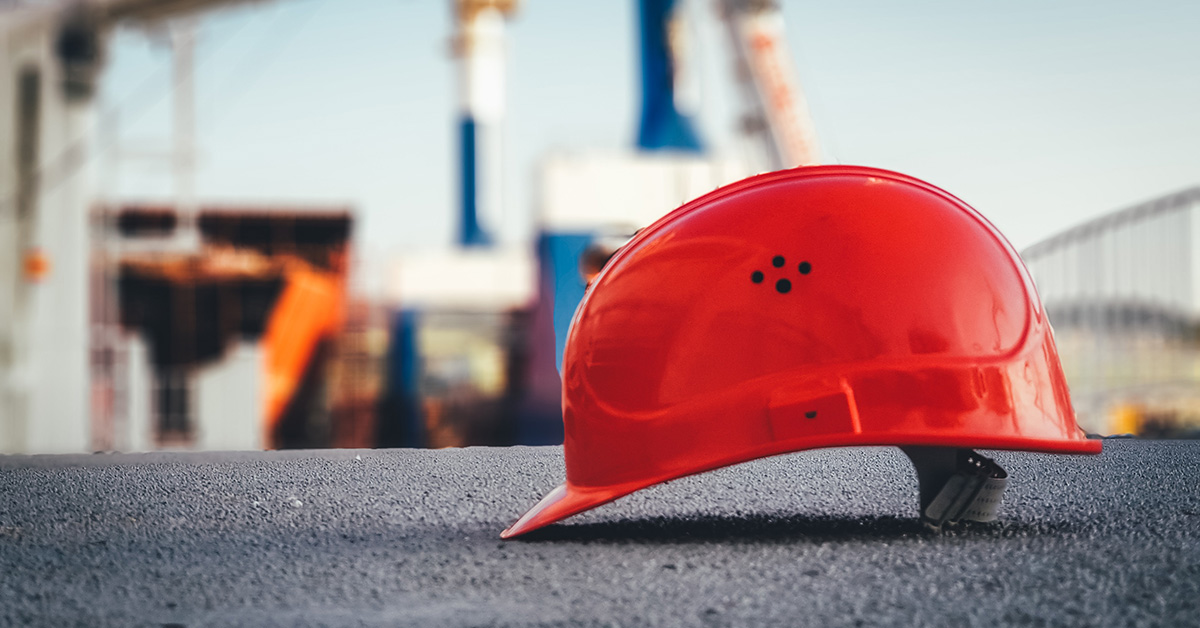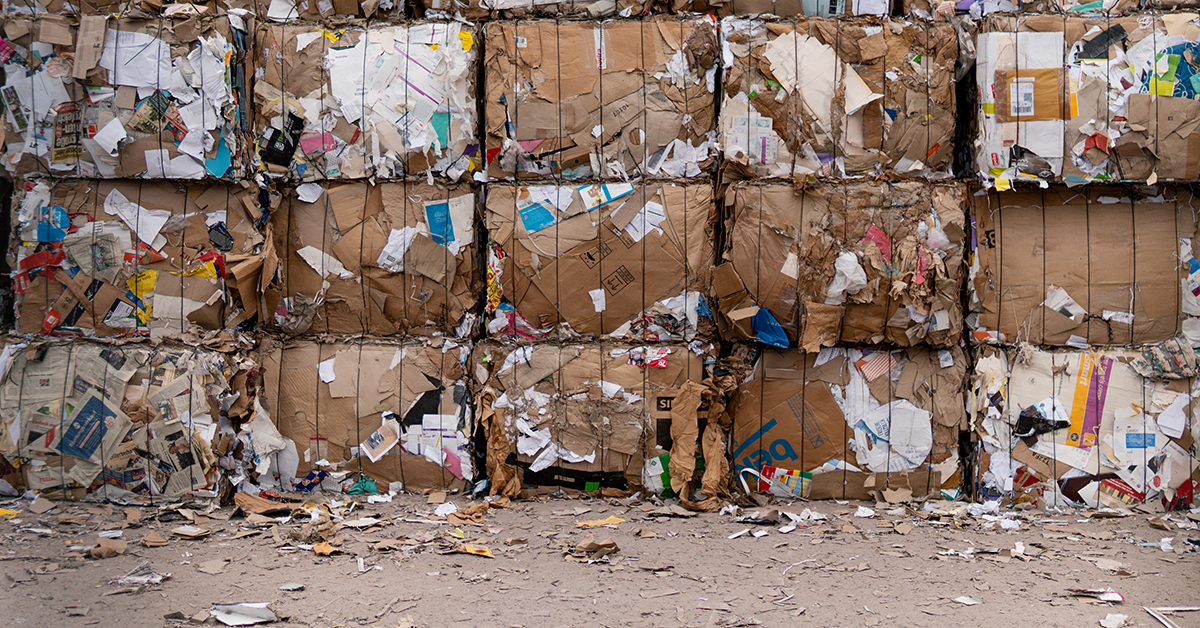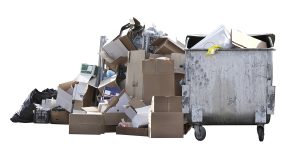by KenBay | Sep 17, 2021

Trash Compactor Safety
When it comes to industrial trash compactors, safety is a top priority. Purchasing a compactor with high safety ratings provides two primary benefits. First, it provides potential savings on insurance and personal injury claims, and second, it can reduce plant downtime.
Trash Compactor Safety Requirements By OSHA Standards
OSHA General Industry Standard guidelines are to be followed for the proper maintenance of any industrial waste compactor.
Each authorized employee needs to receive the necessary training in a number of different disciplines. There are three disciplines employees should train in.
- the recognition of applicable hazardous energy sources
- the type and magnitude of the energy available in the workplace
- the methods and means necessary for energy isolation and control
The KenBay RotoPac industrial waste compactor was designed with all of these disciplines in mind. It is considered one of the best commercial trash compactors on the market. Companies prefer the KenBay model due to its prominently placed isolator switch as well as other safety mechanisms inimical to its design.
Using OSHA metrics, KenBay works diligently to meet standard trash compactor safety requirements
(more…)
by KenBay | Aug 3, 2021

Buying a trash compactor for your business is an important investment. Most companies will research compactors for sale before they sign on the dotted line.
Realizing an acceptable return on your investment (ROI) depends on selecting the best trash compactor for your facility’s specific needs. With the right compactor for the job, your company can see an ROI in one to two years.
There are two primary factors that affect trash compactor cost savings. They include:
- The process of collecting compacted waste and placing it into the compactor.
- The cost associated with hauling waste to landfill, waste-to-energy (WtE), or recycling locations.
(more…)
by KenBay | Jul 25, 2021

When improperly disposed of, industrial and other waste materials can have a huge impact on the environment, and they can be hazardous to anyone who may come into contact with them.
So using proper waste management protocols is not only responsible but is essential in reducing these types of negative impacts.
And for many businesses, that means using a commercial trash compactor.
(more…)
by KenBay | Jun 25, 2021
What Is the Zero Landfill Initiative?
 The Zero Landfill Initiative is a comprehensive attempt by local and international nonprofit organizations to turn landfill waste materials into sustainable energy. This initiative is designed to help facilitate businesses, communities, and international enterprises to reclaim landfill space and redirect these areas toward creating more sustainable work and living spaces. Resource waste material recovery is modeled on the worldwide effort to provide the highest standard of living for countries and communities grappling with their volume of waste production and landfill concerns.
The Zero Landfill Initiative is a comprehensive attempt by local and international nonprofit organizations to turn landfill waste materials into sustainable energy. This initiative is designed to help facilitate businesses, communities, and international enterprises to reclaim landfill space and redirect these areas toward creating more sustainable work and living spaces. Resource waste material recovery is modeled on the worldwide effort to provide the highest standard of living for countries and communities grappling with their volume of waste production and landfill concerns.
(more…)
by KenBay | Mar 24, 2021
Purchasing a commercial trash compactor is often a necessary decision that needs to be reached when planning a facility or up-scaling operations. Several factors need to be addressed and resolved when finding the right commercial trash compactor for a facilities’ specific needs. The following will attempt to answer some of the more commonly asked questions regarding commercial and industrial waste and trash compactors.
How much does a commercial trash compactor cost?
A good place to start answering questions about costs is understanding what you are paying to collect and remove the trash from your facility now. They are:
- What is the nature of the trash?
- How much trash is produced each week/month
- How much are you paying the company hauling your trash
- How will the waste be collected and brought to the compactor
- What percent of the trash do you expect to re-cycle
- What is your expected ROI
Purchasing a commercial compactor is often a necessary decision that needs to be reached when planning a facility or up-scaling operation. The KenBay Industrial Rotary Compactor may not be the best fit for some large-scale applications. Still, if you are hoping to put a highly efficient waste compactor right at the source of the waste, it is worth looking into.
What can you put in a commercial trash compactor?
Typically, materials and objects to be recycled, such as cardboard and cardboard boxes, and the various types of bags, whether plastic or paper, are profitably compacted. If it is content having no value that is to be disposed of, it can be nearly anything one normally sends to a dump. Exceptions are items too large for any commercially available compactors, non-compactable materials such as metal objects, and all types of liquids.
A careful study of your facility’s objectives can usually give an adequate idea of what compactor size you’ll need due to the waste stream generated when the facility is fully operational. Many mid-sized and large facilities trust the KenBay RotoPac industrial compactor to minimize waste directly where it is being produced. Whether it’s plastic bottles, cardboard, styrofoam, toxic paint, used dairy containers, or other easily manipulated materials, the RotoPac is always up for the task.
Are trash compactors worth the money?
The simple answer is “yes” if one has a compactor that reduces the volume of a sufficient amount of trash such that its monthly hauling costs are less than the monthly amortizable cost of the compactor. Another consideration in making the compactor worth the money is that labor costs getting the trash to the compactor are reduced instead of collecting it inside the facility then hauling it to a dumpster before it is compacted. The KenBay RotoPac has a small footprint so that it can be located in a facility near the largest source of the trash being produced. The trash is then compacted before it is hauled to a dumpster for disposal.
Most RAM and other large-scale industrial compactor sit outside or occupy a full loading dock taking up critical space. If they sit outside, their life span will probably be shortened due to the elements’ interference. If they are inside and take up dock space, that is the room you could be put to better use.
A compactor that sits on your facility floor can be moved with a simple hand truck if necessary can ideal in most facilities. And if your industrial compactor has an on-average 6-to-1 compaction ratio, like the RotoPac, then you are saving money by reducing foot traffic needed to clear waste off the production floor.
How is a commercial trash compactor emptied?
The process to empty the container can of the typical large commercial trash compactor is that of the hauling firm using a truck with a hydraulic lift to load the container can, then hauling it to a dump or transfer station. Once there, the rear side of the can is opened, and with the hydraulic lift on the truck, the can is tilted such that the trash falls out. Then the truck hauls the container back to the facility where it was loaded when filled.
The beauty of the KenBay RotoPac is that since it compacts trash into a sealed plastic bag that sits on a standard-sized pallet, the trash generated can be easily moved and stacked into the hauler’s trailer with a forklift.
How does a commercial trash compactor work?
The most common type of commercial trash compactors uses a ram to move the trash into a container can. Container cans are large metal containers that one sees behind many retail stores. However, the ram only projects less than a foot into the attached can, so it actually only compacts trash once the can is beginning to fill. Other trash compactors using container cans compact the trash with an auger that then passes the waste into a container can.
Another type of trash compactor is the industrial rotary trash compactor. It compacts the waste into a bulk plastic bag by a high torque rotating and sweeping metal drum. This type of compactor has a small footprint, so it can be placed inside a facility where the trash is being generated. In that way, the trash is compacted before it is transported anywhere, and usually, with a forklift to the filled bags can be stacked to reduce hauling cost greatly.
Unless your compactor is continually removing your waste’s memory, even while crushing added trash, then you may not be getting your money’s worth. The KenBay RotoPac is unique in its constantly rotating drum head continually removes any bounce-back. This is instrumental in delivering a high compaction ratio as well as a great ROI.
How long does a trash compactor last?
Many factors come into play when asking how long a commercial trash compactor will last:
- Is it an indoor or outdoor compactor?
- How well will it handle corrosive or toxic materials?
- Does it work seamlessly with conveyors or pneumatic feeding devices?
- Is it serviced regularly?
- Is it cleaned regularly?
Some industrial compactors which exist in punishing environments won’t last more than half a decade. The KenBay Stainless Steel RotoPac has proven itself reliable for decades in seafaring environments in which corrosive saltwater air would normally make the compactor quickly inoperable.
Do trash compactors need special bags?
Your run-of-the-mill industrial RAM compactors do not use bags. Several environments that find it advantageous to utilize compactors to compact trash into bags are ocean vessels, ingredient and food-producing areas, and where hazardous waste is being produced. In these instances, special bags are used on ships for ease of remove trash from them. In food areas, large polyethylene is utilized so it is easily sealed to prevent odors from escaping from the trash. Special UN-rated bags are used for transporting hazardous waste. However, much of the trach produced can place in polyethylene bulk gas.
Having an industrial compactor indoors and using it for liquids or any food waste odor makes it necessary to have a sealed bag. KenBay offers several different polyethylene plastic bags that can be easily sealed and stacked, and put aside until enough waste is generated to necessitate a call to a hauler and schedule a pickup.
In conclusion, if your facilities’ waste stream makes it so voluminous that it gets in the way of your production schedule or hampers worker safety, you’ll need to make the right decision regarding purchasing the right commercial waste compactor. Just remember, there different types of compactors and balers for crushing waste, but not everyone is right for your application.
by KenBay | Jul 30, 2020

Aerospace Supplier Facility Management
As an industry leading Aerospace Supplier founded in 1979, we have built an excellent reputation within the aerospace sector by providing top notch quality and integrity for almost 40 years. Our philosophy is to provide a superior product by controlling growth and maintaining a sole focus on aerospace. Simply put, we are the “Standard of Excellence” within the aerospace metal finishing industry. Our commitment to the customer, qualified personnel and in-house quality guidelines have made us and will continue to make us a leader within its industry.
(more…)
by KenBay | Jun 9, 2020
 ID Label Inc. is the industry leader in custom barcode label solutions. They provide design engineering, production, signage and nationwide installation services of custom, variable-information barcode labels and asset tags for organizations in the warehousing, supply chain, manufacturing, electronics, calibration, medical, laboratory, and library markets.
ID Label Inc. is the industry leader in custom barcode label solutions. They provide design engineering, production, signage and nationwide installation services of custom, variable-information barcode labels and asset tags for organizations in the warehousing, supply chain, manufacturing, electronics, calibration, medical, laboratory, and library markets.
(more…)
by KenBay | May 22, 2020

Industrial Rotary Arm Compactor Compacts Cardboard
An animal health care company, one of the world’s largest producers of medicine and vaccinations for pets and livestock, recently began using a KenBay RotoPac industrial trash compactor for compacting their packaging waste.
As shipments come into the facility, boxes are emptied before the incoming items are moved to the production area. Packaging is not permitted in the production area where animal medicines are made.
(more…)
by KenBay | May 8, 2020
Challenge: Duracell, the well-known battery maker, was using a vertical baler to crush industrial Super Sacks at its South Carolina location. The Sacks came to Duracell containing a black dust ingredient for producing their batteries. The Sacks no longer had a use so they were being baled to reduce the cost of hauling for disposal. However, as the bags were crushed in the baling process the black dust was being dispersed into the surrounding area. This caused a serious hazard problem to the workers. Duracell needed a cost effective way of containing the dust and keeping the bales from creating a black trail as they were transported to an outside dumpster.
Solution: Through an internal search of their parent company Procter&Gamble, the KenBay RotoPac industrial compactor was found to be used for compacting waste in polyethylene bulk bags in another location. Duracell learned that by merely placing a steel hood over the RotoPac, the dust could be contained as the Super Sacks were compacted into the bulk bags. Since the polyethylene bags could be easily sealed when filled, they could be transported without the dust causing a problem.
The RotoPac compacted approximately 80 dusty Sacks into a single bulk bag forming an approximate one meter cube, ideal for ease of transport. No longer did the compacting of the Sacks have to be performed in a separate room. Since the RotoPac has a footprint slightly larger than a standard pallet, the compacting of the bags could be done in the corner of a storage room. Another benefit achieved using the RotoPac was by customizing its input and extraction of the filled bag, making the process much safer.
Benefits: Increased safety, reduced hauling costs, and the elimination of the need for a separate room to compact Sacks. In all, a cleaner working environment.
by Kenbay Admin | Jun 6, 2019

Dealing with hazardous waste disposal can often seem overwhelming.
Not only are there a multitude of hazardous waste disposal rules and regulations to adhere to, but there are also serious consequences associated with any mishap.
The first step in creating a plan to dispose of hazardous waste is to assess your procedures that produce waste and consider how you might diminish their byproducts.
Here are five tips to make sure you’re handling hazardous waste disposal safely and efficiently.
(more…)





 The Zero Landfill Initiative is a comprehensive attempt by local and international nonprofit organizations to turn landfill waste materials into sustainable energy. This initiative is designed to help facilitate businesses, communities, and international enterprises to reclaim landfill space and redirect these areas toward creating more sustainable work and living spaces. Resource waste material recovery is modeled on the worldwide effort to provide the highest standard of living for countries and communities grappling with their volume of waste production and landfill concerns.
The Zero Landfill Initiative is a comprehensive attempt by local and international nonprofit organizations to turn landfill waste materials into sustainable energy. This initiative is designed to help facilitate businesses, communities, and international enterprises to reclaim landfill space and redirect these areas toward creating more sustainable work and living spaces. Resource waste material recovery is modeled on the worldwide effort to provide the highest standard of living for countries and communities grappling with their volume of waste production and landfill concerns.
 ID Label Inc. is the industry leader in custom barcode label solutions. They provide design engineering, production, signage and nationwide installation services of custom, variable-information barcode labels and asset tags for organizations in the warehousing, supply chain, manufacturing, electronics, calibration, medical, laboratory, and library markets.
ID Label Inc. is the industry leader in custom barcode label solutions. They provide design engineering, production, signage and nationwide installation services of custom, variable-information barcode labels and asset tags for organizations in the warehousing, supply chain, manufacturing, electronics, calibration, medical, laboratory, and library markets.

